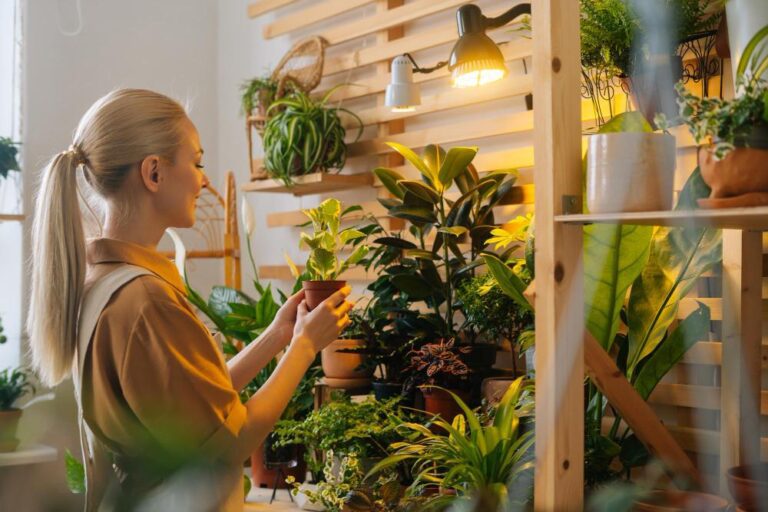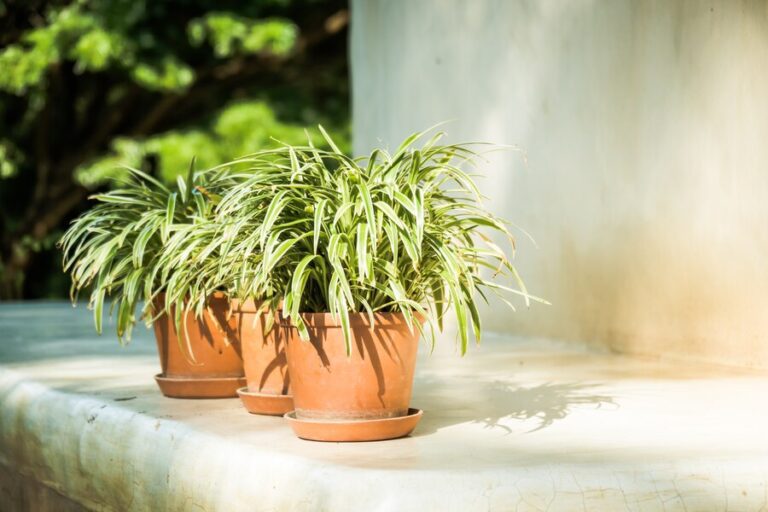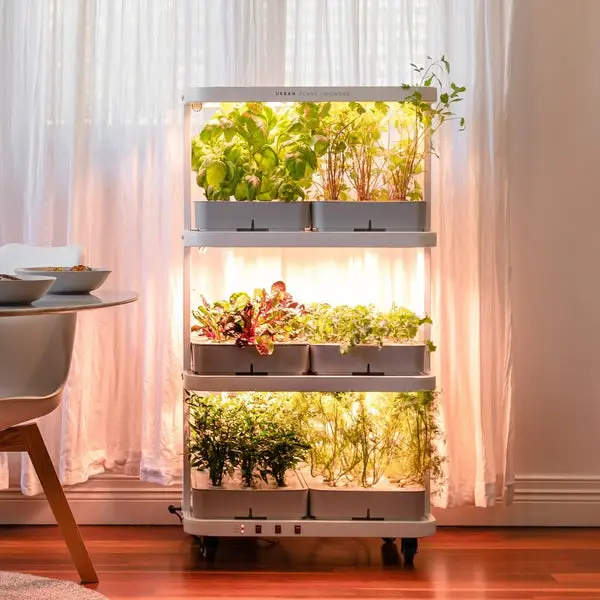How Long Do House Plants Live? What’s Their Average Lifespan?
Table of Contents
House Plants and Their Lifespan
House plants can bring life and vibrancy to any indoor space, but their lifespan can vary greatly depending on various factors. The average lifespan of house plants ranges from a few months to several years, with some even living for decades under the right conditions. Understanding the lifespan of different house plants can help enthusiasts choose the right plants for their home and implement appropriate care practices to prolong their lives.

Factors such as the type of house plant, environmental conditions, watering routine, and the level of care provided can all impact the lifespan of these green companions. While some house plants are more resilient and long-lived, others may require specific attention to thrive. By being aware of these factors and taking proactive measures to create a suitable environment, individuals can enjoy the beauty and benefits of their house plants for years to come.
Types of House Plants
House plants come in a wide array of types, each offering unique characteristics and care requirements. From leafy foliage plants like pothos and ferns to flowering plants such as orchids and African violets, there is a house plant to suit every preference and space. Succulents like aloe vera and jade plants are popular choices for their resilience and striking appearance, while air-purifying plants like spider plants and snake plants are favored for their health benefits.
In addition to the traditional potted plants, terrariums and hanging baskets are also popular choices for indoor gardening enthusiasts. Terrariums create miniature ecosystems within glass containers, making them visually appealing and easy to care for. Hanging baskets add a vertical element to indoor spaces, perfect for trailing plants like ivy and pothos. Whether you prefer lush foliage, colorful blooms, or unique shapes, there is a house plant type to complement any home decor style.

Factors Affecting House Plants’ Lifespan
Various factors play a crucial role in determining the lifespan of house plants. One of the key factors is proper watering. Overwatering or underwatering can significantly impact a plant’s longevity by causing root rot or dehydration. Additionally, the type of soil used and its drainage capabilities can affect how well a plant absorbs water and nutrients, ultimately influencing its lifespan.
Another factor to consider is the amount and quality of light a house plant receives. Different plants have varying light requirements, with some needing direct sunlight while others thrive in low-light conditions. Insufficient light can lead to stunted growth and poor health, shortening the lifespan of the plant. On the other hand, excess light exposure can cause sunburn and other damage, negatively impacting the plant’s overall well-being.
Here are the factors affecting the lifespan of houseplants:
| Factor | Impact on Lifespan |
| Watering | Underwatering: Insufficient water can lead to wilting and rapid death. Overwatering: Excess water can harm plants, especially those not requiring much moisture. |
| Sunlight Exposure | Too Much Sun: Placing plants in intense sunlight can be detrimental. Not Enough Sun: Insufficient light affects photosynthesis and overall health. |
| Environmental Conditions | Susceptibility to Disease: Plant health is influenced by disease resistance. Changing Environmental Conditions: Sudden changes can stress plants. Drought and Cold: Extreme conditions impact survival. Competition for Nutrients: Soil quality and nutrient availability matter. |
Remember that proper care and attention can significantly extend the lifespan of your indoor plants.
Signs of a Healthy House Plant
A healthy house plant exhibits several key characteristics that indicate it is thriving in its environment. One visible sign of a healthy house plant is vibrant and lush foliage, with leaves that are a rich green color and free from spots, browning, or yellowing. Additionally, a healthy plant will demonstrate strong growth patterns, with new leaves unfurling regularly and stems that are firm and upright.
Another indicator of a healthy house plant is an active root system. When you observe roots that are creamy white in color and spreading out evenly throughout the soil, it signifies that the plant is absorbing nutrients and water effectively. Furthermore, a plant that is healthy will often exhibit sturdy root development, with roots that anchor the plant securely in its container.

Signs of an Unhealthy House Plant
An unhealthy house plant may exhibit various signs that indicate its distress. One common sign is wilting leaves, which could be a result of underwatering, overwatering, or inadequate light. Yellowing or browning leaves may also signal nutrient deficiencies, root rot, or pests infestation. Furthermore, stunted growth or lack of new growth can indicate an unfavorable environment for the plant, such as poor soil quality or improper temperature conditions. It’s crucial to address these symptoms promptly to prevent further deterioration of the plant’s health and potentially save it from irreversible damage.
Another sign of an unhealthy house plant is the presence of unusual spots, mold, or strange growth on the leaves or stems. Such abnormalities can indicate fungal or bacterial infections, pests infestation, or even viral diseases. Dropping leaves or sudden leaf loss without any apparent reason can also be a cause for concern, pointing to potential stress factors like sudden changes in watering frequency, insufficient humidity, or improper lighting conditions. Observing these visible signs can help the plant owner identify problems early on and take appropriate action to restore the plant’s vitality before it’s too late.

Common House Plants and Their Average Lifespan
When it comes to common house plants and their average lifespan, it is essential to understand the typical longevity of these popular green companions. Spider plants, known for their air-purifying qualities, can thrive for approximately 2-5 years when well cared for. The resilient snake plant, also known as mother-in-law’s tongue, can live for an impressive 5-10 years, making it a great long-term addition to your indoor garden.
Peace lilies, with their elegant white blooms, can brighten up your space for about 5-7 years if provided with the right conditions. The popular pothos vine, loved for its trailing growth and low maintenance, typically survives for 5-10 years in a nurturing environment. Each of these common house plants brings unique characteristics and benefits to your home, adding beauty and freshness to your living spaces.
Here’s a table summarizing some common houseplants and their average lifespans:
| Houseplant | Average Lifespan |
| Snake Plant | 2-5 years |
| Spider Plant | 2-5 years |
| Peace Lily | 2-5 years |
| Pothos (Devil’s Ivy) | 2-5 years |
| ZZ Plant | 2-5 years |
| Rubber Plant | 2-5 years |
| Fiddle Leaf Fig | 2-5 years |
| Aloe Vera | 2-5 years |
| Jade Plant | 20+ years |
| Succulents | Varies (some live decades) |
Keep in mind that proper care significantly impacts the lifespan of houseplants.
Tips for Prolonging the Lifespan of House Plants
To prolong the lifespan of your house plants, it is crucial to provide them with the right care and conditions. Firstly, ensure that your plants are placed in appropriate lighting to meet their specific needs. Different house plants require different levels of light, so it is important to research and understand the lighting requirements of each plant in your care. Additionally, watering your plants correctly is essential for their well-being. Overwatering can lead to root rot, while underwatering can cause dehydration and wilting. Finding the right balance and following a consistent watering schedule based on each plant’s needs is vital for their longevity and health.
Some tips to help prolong the lifespan of your beloved houseplants:
| Tip | Description |
| Water on a Schedule | Adjust the watering frequency based on the specific plant’s needs. Some plants prefer moist soil, while others thrive in drier conditions. Overwatering or underwatering can stress plants. |
| Fertilize a Few Times a Year | Regular fertilization replenishes essential nutrients. Follow the instructions on the fertilizer bottle and apply it during the growing season (e.g., in April, June, and August). |
| Provide the Necessary Lighting | Understand your plant’s light requirements. Some need bright, direct sunlight (south-facing window), while others thrive in indirect or filtered light (through curtains or artificial bulbs). |
| Check for Pests | Regularly inspect your plants for signs of pests (e.g., aphids, spider mites). Early detection allows you to address infestations promptly. |
| Provide Well-Draining Soil | Use well-draining potting mix to prevent waterlogged roots. Good drainage ensures optimal oxygen supply and prevents root rot. |
| Upgrade the Pot When Necessary | As your plant grows, consider repotting it into a larger container. This provides more space for roots to expand and access nutrients. |
| Treat Issues Immediately | Address any problems promptly. Wilting leaves, yellowing, or unusual spots may indicate issues like overwatering, nutrient deficiencies, or diseases. Investigate and take corrective action. |
Remember that each plant is unique, so observe your houseplants closely and adjust care practices accordingly
Best Practices for Caring for House Plants
When it comes to caring for house plants, there are several best practices that can help ensure their longevity and health. Providing the right amount of light is crucial for the photosynthesis process, which is essential for plant growth. Different plants have varying light requirements, so it’s important to place them in locations that match their needs. Overexposure to direct sunlight can lead to sunburn, while insufficient light can cause stunted growth and poor health. Regularly rotating your plants can help ensure they receive even sunlight on all sides, promoting balanced growth.
In addition to light, proper watering is key to the well-being of house plants. Overwatering can lead to root rot and fungal diseases, while underwatering can cause wilting and nutrient deficiencies. Each plant has its own watering needs, so it’s important to research and understand the specific requirements of your plants. Using a well-draining potting mix and allowing excess water to drain out of the pot can help prevent waterlogged roots. Checking the moisture level of the soil regularly and adjusting your watering schedule accordingly is essential for keeping your house plants healthy and thriving.
Indoor vs Outdoor House Plants’ Lifespan
Indoor plants and outdoor plants differ significantly in their lifespan due to varying environmental conditions. Indoor house plants generally have a longer lifespan compared to outdoor plants. This is primarily because indoor plants are shielded from harsh weather conditions, pests, and diseases that can affect outdoor plants. The controlled environment indoors provides stability in terms of temperature, humidity, and light exposure, which contributes to the overall health and longevity of indoor house plants.
On the other hand, outdoor plants are exposed to fluctuating weather patterns, pests, and natural elements that can impact their lifespan. Factors such as extreme temperatures, excessive sunlight, heavy rainfall, and strong winds can take a toll on outdoor plants, leading to a shorter lifespan compared to their indoor counterparts. Additionally, outdoor plants may require more maintenance and care to ensure their survival in unpredictable outdoor conditions.
Comparing the lifespans of indoor and outdoor houseplants:
| Type of Plant | Indoor Lifespan | Outdoor Lifespan | Examples (Indoor) | Examples (Outdoor) |
| Indoor Plants | 2-5 years (some up to 20 years) | Varies (some live decades) | 1. Snake Plant (Sansevieria): Known for its resilience and air-purifying properties. 2. Spider Plant (Chlorophytum comosum): Produces “pups” or baby plants. 3. Peace Lily (Spathiphyllum): Elegant white blooms. | 1. Jade Plant (Crassula ovata): Succulent with thick, fleshy leaves. 2. Succulents: Diverse group of water-storing plants. 3. Rosemary: (Rosmarinus officinalis) – Fragrant herb used in cooking. |
| Outdoor Plants | Varies (some live decades) | Varies (some live decades) | 1. Azaleas (Rhododendron spp.): Colorful spring flowers. 2. Lavender (Lavandula spp.): Fragrant herb with purple blooms. 3. Japanese Maple (Acer palmatum): Ornamental tree with stunning foliage. | 1. Oak Trees (Quercus spp.): Majestic hardwood trees. 2. Hydrangeas (Hydrangea spp.): Large, showy flower clusters. 3. Daylilies (Hemerocallis spp.): Hardy perennials with vibrant blooms. |
The Role of Lighting in House Plants’ Lifespan
Proper lighting is essential for the healthy growth and longevity of house plants. Different types of house plants have varying lighting requirements, so it’s crucial to understand the individual needs of each species. Insufficient light can lead to stunted growth, yellowing leaves, and even plant death, while too much light can cause sunburn and leaf damage. Finding the right balance of natural or artificial light is key to ensuring your house plants thrive indoors.
Natural light is the preferred choice for most house plants, as it provides a well-rounded spectrum of light that plants need for photosynthesis. South-facing windows typically offer the brightest light, while east and west-facing windows provide moderate light levels. If natural light is limited, supplementing with grow lights can help mimic the sun’s rays and support healthy plant growth. Remember to rotate your plants regularly to ensure all sides receive adequate light exposure for even growth and development.

The Role of Watering in House Plants’ Lifespan
Watering plays a crucial role in the lifespan of house plants. Proper watering is essential for the health and vitality of indoor plants. Over-watering can lead to root rot and other fungal diseases, while under-watering can cause wilting and eventually death. Finding the right balance in watering frequency and amount is key to ensuring the longevity of your house plants.
It is important to consider the type of plant, its specific watering needs, the potting mix used, and the environmental conditions in which the plant is kept when determining the watering schedule. Factors such as humidity levels, temperature, and the season can also influence how often a plant should be watered. Observing the plant for signs of thirst, such as dry soil or drooping leaves, and adjusting the watering routine accordingly can help prevent water-related issues and promote a healthy growth environment for your indoor greenery.
Let’s delve into the crucial role of watering in determining the lifespan of houseplants:
| Aspect | Description |
| Watering Frequency | Avoid extremes: Watering too frequently or too infrequently can harm plants. Shallow surface watering discourages deep root development. Opt for less frequent watering that thoroughly saturates the soil. Aim for about 1 inch of water per week (and more during peak summer) for flowers and vegetables. |
| Watering Technique | Soil level: Direct water at the base of plants to reach the roots where it’s needed most. Consider using a soaker hose for slow, deep soaking. Avoid sprinklers: Broadcast sprinklers waste water, dampen leaves (increasing disease risk), and may evaporate before reaching the plants. |
| Timing Matters | Morning watering: Water in the morning to allow excess moisture on leaves to dry throughout the day. Wet leaves for prolonged periods can lead to diseases. Check soil: Stick your finger about an inch into the potting mix- if it feels dry, water; if damp, check back in a day or two. |
| Adapt to Seasonal Changes | Seasonal growth: Indoor plants grow more during spring and summer, less in fall and winter. Adjust watering accordingly. Observe growth: If growth slows, reduce watering until the plant resumes growth. |
| Avoid Overwatering | Root health: Overwatering can lead to root rot and fungal diseases. Stick to the right balance for healthy roots. Pick up the container: If it feels light for its size. Add water; gauge saturation by lifting the pot. |
The Role of Temperature in House Plants’ Lifespan
Temperature plays a crucial role in the lifespan and overall health of house plants. Different plant species have varying temperature preferences, which directly impact their growth and longevity. Extreme temperatures, whether too hot or too cold, can stress plants and lead to stunted growth or even death. It is essential for indoor gardeners to understand the relationship between temperature and plant health to create the ideal environment for their green companions.
Consistent monitoring of temperature levels in your indoor space is key to ensuring the well-being of your house plants. Most common house plants thrive in temperatures ranging from 65 to 75 degrees Fahrenheit during the day and slightly cooler at night. Sudden fluctuations in temperature can shock plants and disrupt their growth patterns. By maintaining a stable and suitable temperature range for your plants, you can significantly contribute to their longevity and vitality.
The Role of Humidity in House Plants’ Lifespan
Humidity plays a crucial role in the health and lifespan of house plants. Maintaining proper humidity levels is essential for the overall well-being of your indoor greenery. House plants have varying needs when it comes to humidity, with some thriving in high humidity environments while others prefer drier conditions.
Humidity levels impact house plants in several ways. Adequate humidity helps plants absorb nutrients and moisture through their roots, promotes healthy growth, and prevents issues such as wilting or leaf drop. On the other hand, low humidity can lead to dry and damaged foliage, making plants more susceptible to pests and diseases. Monitoring and adjusting humidity levels in your home can significantly impact the longevity and vibrancy of your beloved house plants.
The role of humidity in determining the lifespan of houseplants:
| Aspect | Description |
| Importance of Humidity | Essential for Survival: Houseplants need humidity because they evolved in places with high humidity. Water in the air aids photosynthesis, which is crucial for their survival. Plants that lack sufficient humidity struggle to grow well. |
| Transpiration Process: Plants increase humidity through evapotranspiration. Water travels from soil through roots, stems, and up to leaves. Leaves release water into the air through tiny pores called stomata. | |
| Ideal Humidity Levels | Varies by Plant: Some plants thrive in low humidity (e.g., desert cacti), while most houseplants hail from tropical rainforests and need an ambient humidity of about 65% to grow properly. |
| Benefits of High Humidity | Faster Growth: Adequate humidity helps plants grow faster. |
| Prevents Crispy Tips: Proper humidity prevents leaf edges from becoming dry and crispy. | |
| Extended Watering Intervals: Well-humidified plants can go longer between waterings. | |
| Larger Leaves: Leaves grow bigger when humidity levels are optimal. | |
| Houseplants for Humidity | Spider Plant: Excellent for increasing indoor humidity. Also removes toxins from the air. |
| Jade Plant: Increases relative humidity, especially during darker months. | |
| Areca Palm: Palms, including the Areca palm, add humidity. Requires sunlight and moist soil. | |
| English Ivy: Easy to care for, grows rapidly, and has high transpiration rates. |
Repotting and its Impact on House Plants’ Lifespan
Repotting plays a crucial role in the overall lifespan and well-being of house plants. When a plant outgrows its current container, its roots can become root-bound, hindering proper nutrient absorption and water retention. Repotting allows for the root system to expand and grow freely, promoting healthier growth and longevity. It also provides an opportunity to refresh the soil, removing any compacted or depleted nutrients that could impede the plant’s health.
Furthermore, the process of repotting can help prevent the onset of diseases and pest infestations that often occur in overcrowded and stagnant root systems. By providing adequate space for the roots to spread out and thrive, repotting reduces the risk of root rot and other common issues associated with poor soil aeration and drainage. A well-timed and carefully executed repotting can revitalize a house plant, giving it a new lease on life and ensuring its continued vibrancy and longevity in your indoor space.
Benefits of Having House Plants at Home
House plants offer numerous benefits beyond just their aesthetic appeal. Not only do they add a touch of greenery to indoor spaces, but they also contribute to a healthier environment. Plants are natural air purifiers, absorbing carbon dioxide and releasing oxygen during photosynthesis, which can improve air quality in your home. Additionally, some house plants have been shown to help reduce stress, boost mood, and increase productivity. Research has also suggested that having plants indoors can help lower blood pressure and reduce the risk of illnesses.
In addition to the physical benefits, caring for house plants can also have positive psychological effects. Many people find tending to plants to be a therapeutic and calming activity, creating a sense of purpose and satisfaction. The act of nurturing a living organism can instill a sense of responsibility and mindfulness, promoting overall well-being. Moreover, having house plants can also enhance the ambiance of a space, making it feel more inviting and lively. The benefits of incorporating house plants into your home go beyond mere decoration, offering a multitude of advantages for both your physical and mental health.

Common Mistakes to Avoid When Caring for House Plants
When caring for house plants, it’s crucial to avoid common mistakes that can have a negative impact on their health and lifespan. One common mistake is overwatering, which can lead to root rot and other issues. It’s important to water your plants only when the top inch of soil is dry to the touch, allowing for proper drainage to avoid waterlogging.
Another mistake to avoid is placing your house plants in areas with insufficient or excessive light. Plants need the right amount of light to thrive, so be mindful of their specific light requirements. Insufficient light can result in stunted growth and poor health, while excessive light can lead to leaf burn or wilting. Ensuring your plants receive the correct amount of light is key to their overall well-being.
To Know More About House Plant, Watch This Video.
How often should I repot my house plants?
House plants should be repotted every 1-2 years, or when they outgrow their current container. Repotting helps prevent root-bound plants and allows for better growth.
Can I use tap water to water my house plants?
It is best to use filtered or distilled water for house plants, as tap water can contain chemicals and minerals that may be harmful to the plants over time.
Should I fertilize my house plants regularly?
Yes, house plants benefit from regular fertilization during their growing season. Be sure to follow the instructions on the fertilizer package and avoid over-fertilizing, which can harm the plants.
Is it necessary to rotate my house plants to ensure even growth?
Yes, rotating your house plants every few weeks helps promote even growth and prevents the plants from leaning towards the light source.
How can I prevent pests from infesting my house plants?
Keep a close eye on your house plants for any signs of pests, such as webs, holes in leaves, or sticky residue. Regularly inspecting and cleaning the plants, as well as using natural pest control methods, can help prevent infestations.







